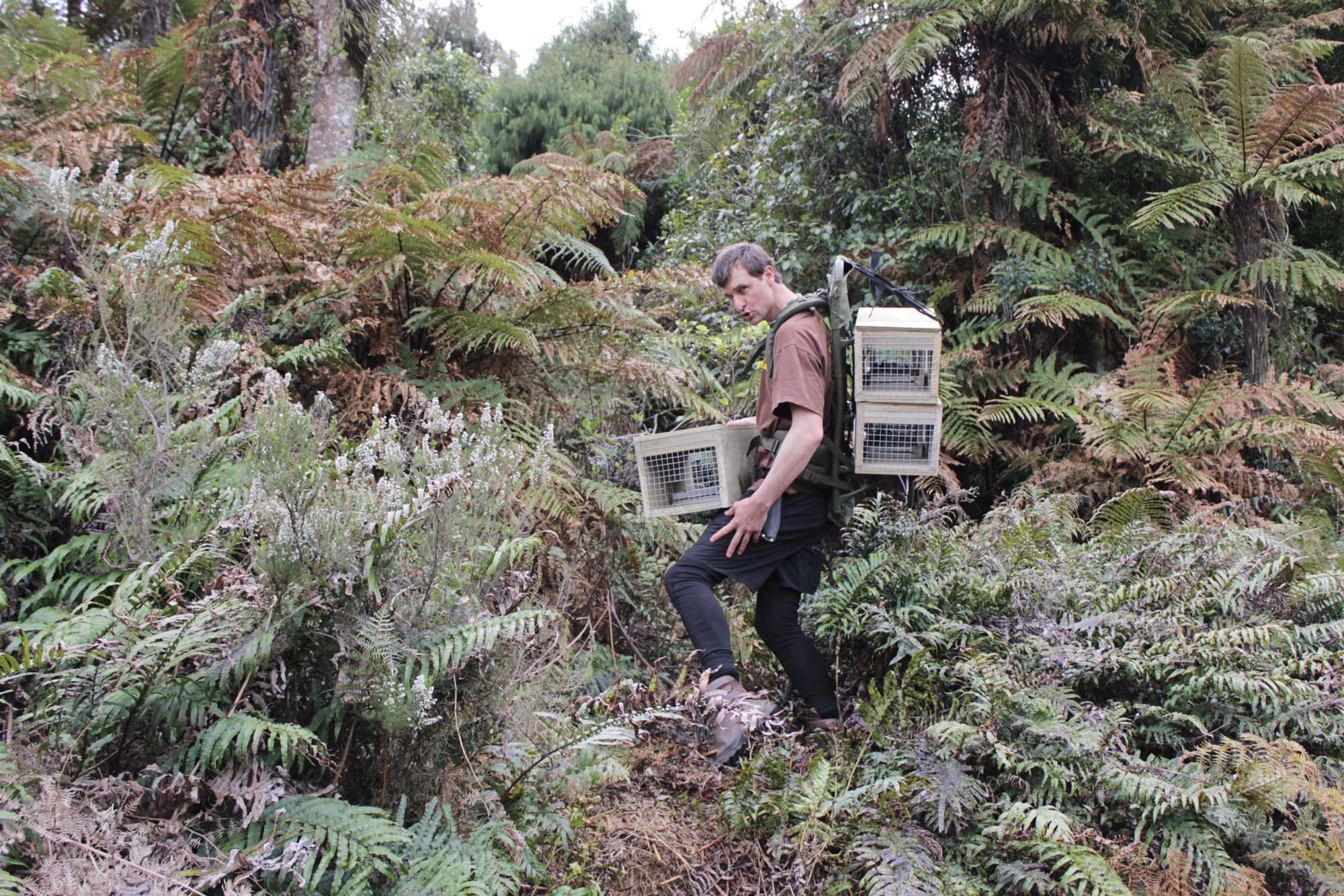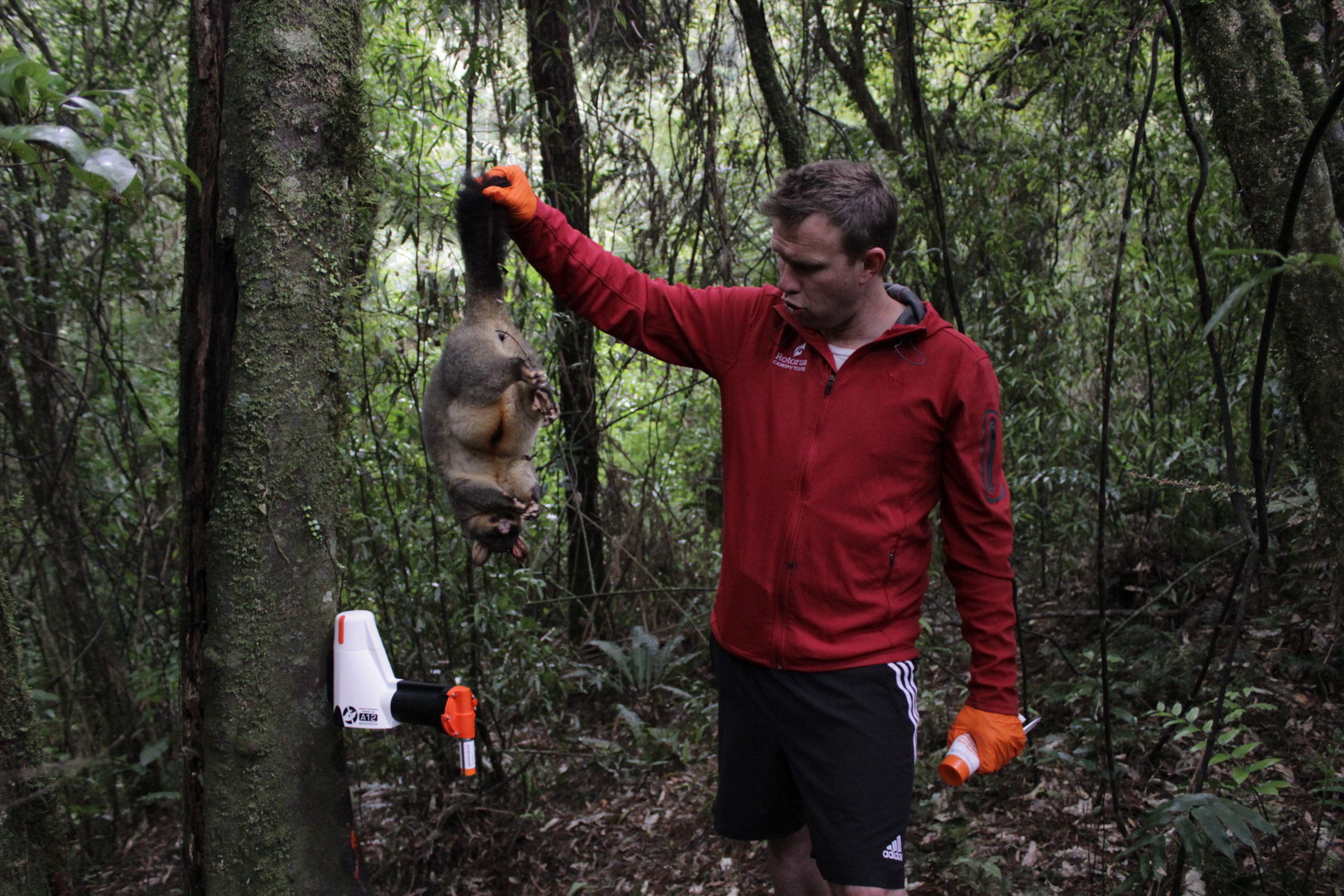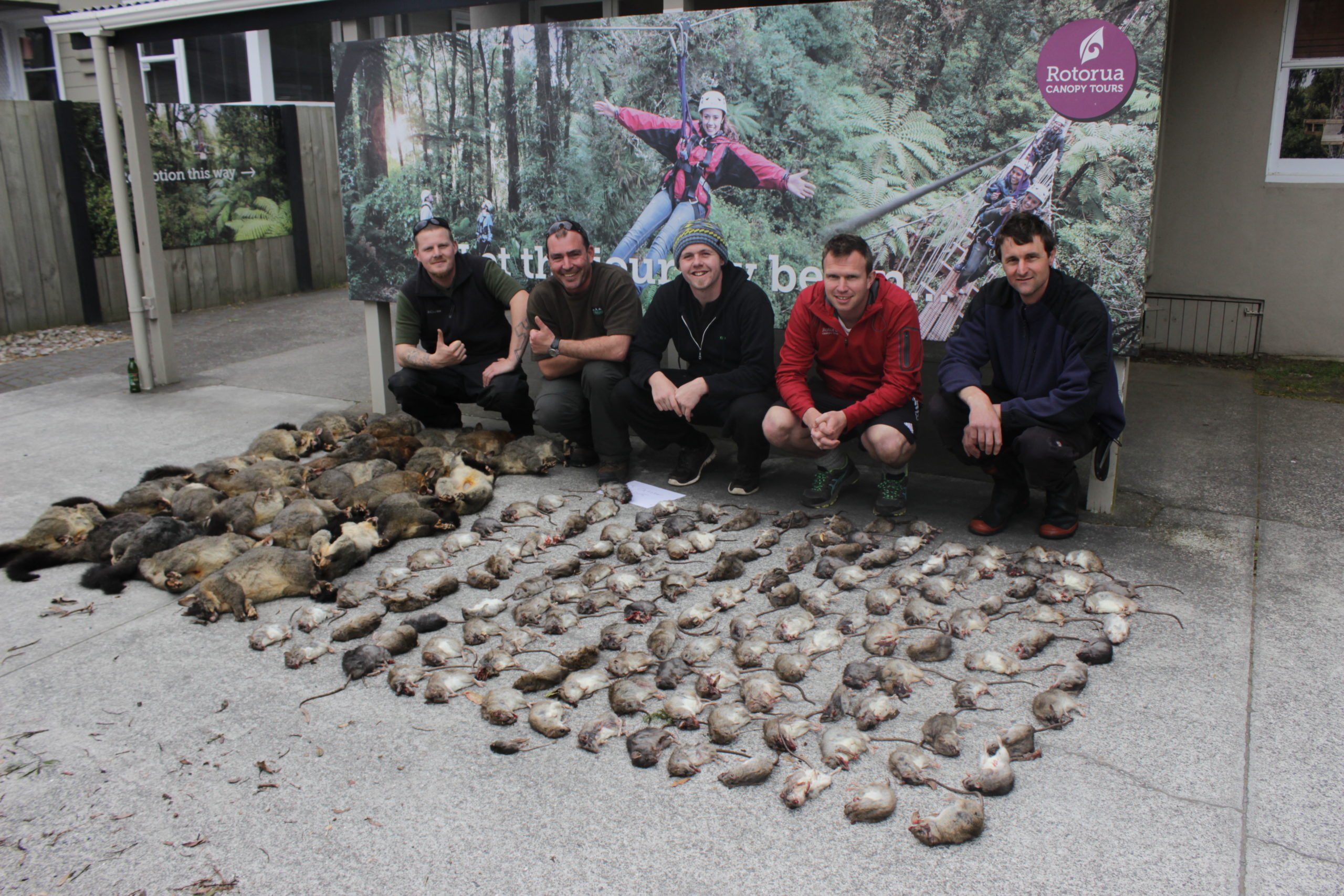In October 2015 Rotorua Canopy Tours invested in a new range of automated traps from Goodnature.
The way we had begun trapping in 2013 worked. But our original traps were all manual and very labour intensive to re-set and monitor.
Armed with this new technology, we installed 450 Goodnature self-resetting rat and possum traps and widened our pest control area from 50ha to 100ha during phase 2 of our conservation project.
In total we spent 300 hours cutting 22km of trails through the forest as trapping lines. And during a subsequent three day blitz we caught over 700 introduced pests!
Photo: Guide shane takes in the DOC200 manual trap by foot. These traps are to be set around the outside edge of the trapping network.
We spent $70,000 setting up Phase 2 but we’re extremely pleased with the results. In fact, the success of this operation can clearly be seen in our forest where we’ve had some amazing finds.
In early 2016 a rare striped skink was spotted on tour, and more recently, pacific geckos have been hanging out near our canopy platforms. We’re super excited to see what else we’re going to find in this forest as our trapping programme becomes more extensive in future.
Photo: Canopy Tours founder, James Fitzgerald, discovers large possum under Goodnature A12 trap.
In late November 2015 (a month after our Phase 2 trapping programme began), we did a post-monitoring survey to see how successful we had been.
This involved placing chew cards (small squares of plastic corflute spread with peanut butter), out into the forest every 50m along our monitoring lines. When animals chew on these cards they leave their bite marks behind for us to record, giving us a good idea of what’s out there pest-wise.
Pre-monitoring indicated rats dominated about 80% of the forest (yikes!). A successful operation would hope to get the rats and possums down to 5% or less. We are very pleased to report that since trapping started, monitoring indicates we’re now at 0% rats and 5% possums! An awesome result for our Rotorua Eco Tour.
Thanks to the self-resetting Goodnature traps (which are always live and working), these pest numbers will now stay at low levels, creating a safe area for our native species to thrive.
Photo: Increadible results from Phase two of the trapping programme.